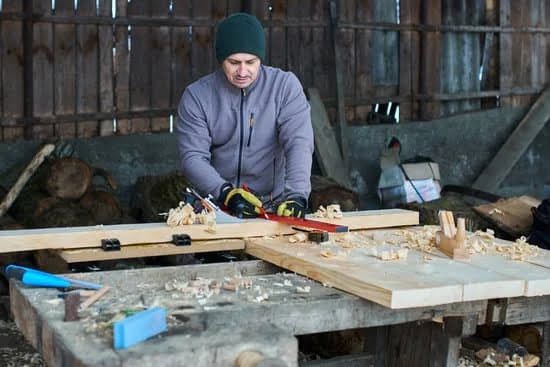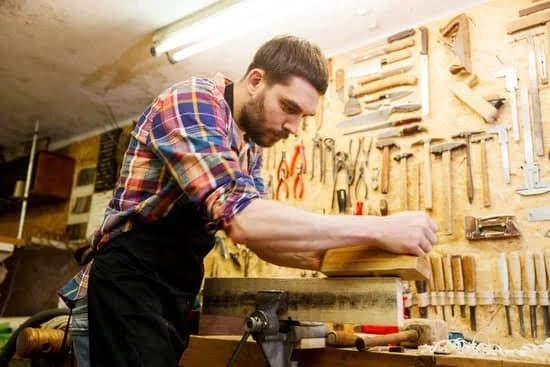Woodworking TV shows have a long and storied history, with a rise to popularity in the 20th century followed by a decline in recent years. During their golden age, these shows captivated audiences with demonstrations of intricate woodworking techniques, DIY projects, and stunning craftsmanship. However, changes in viewer interests and programming preferences have led to a decline in the popularity of woodworking TV shows.
The golden age of woodworking TV shows saw an influx of captivating programs that showcased the artistry and skill of woodworkers. These shows not only provided entertainment but also served as educational platforms for aspiring woodworkers and DIY enthusiasts. Viewers were drawn to the hands-on approach and step-by-step guidance offered by these programs, making them a staple in many homes.
Unfortunately, as viewer interest began to wane, there was a noticeable shift in programming preferences that veered away from traditional woodworking content. This shift prompted networks to rethink their lineups and priorities, ultimately leading to fewer opportunities for woodworking TV shows to capture audience attention. As a result, many dedicated woodworking programs struggled to find their place in an evolving television landscape.
The Golden Age of Woodworking TV Shows
During the late 20th and early 21st centuries, woodworking TV shows entered a golden age that captivated audiences and inspired a resurgence in the craft. This era saw the rise of iconic woodworking personalities such as Norm Abram, Roy Underhill, and David Marks, who became household names for woodworking enthusiasts. These individuals played a pivotal role in popularizing woodworking as a form of entertainment while simultaneously educating viewers on various techniques and projects.
The Golden Age of Woodworking TV Shows witnessed an influx of programming dedicated to the craft, with several networks dedicating airtime specifically for woodworking content. Viewers were treated to a wide array of shows that catered to different skill levels, from beginner-friendly tutorials to advanced techniques. The popularity of these programs reached its peak during this period, drawing in large audiences and sparking widespread interest in woodworking as a hobby and profession.
During this time, the availability of diverse woodworking TV shows allowed individuals to learn new skills and gain inspiration from master woodworkers. Shows like “The New Yankee Workshop” with Norm Abram and “Woodwright’s Shop” with Roy Underhill not only provided entertainment but also served as educational platforms for aspiring woodworkers. These programs offered step-by-step guides, expert tips, and creative project ideas that helped viewers improve their craft and fostered a sense of community among woodworking enthusiasts.
- The New Yankee Workshop
- Woodwright’s Shop
- Wood Works with David Marks
Decline in Viewer Interest
The decline in viewer interest in woodworking TV shows has been a topic of discussion among industry insiders and enthusiasts alike. There was a time when woodworking TV shows experienced a golden age, captivating audiences with the artistry and skill involved in creating intricate wood pieces. However, over the years, there has been a noticeable shift in the level of interest from viewers.
One of the reasons behind the decline in viewer interest could be attributed to the changing demographics of television audiences. With the rise of streaming services and on-demand content, traditional TV viewership has seen a decrease, impacting woodworking TV shows along with other genres. Additionally, shifts in lifestyle and leisure activities have also played a role in diverting attention away from traditional television programming.
Another factor that may have contributed to the decline is the oversaturation of reality TV shows, creating a market that is flooded with competition for viewers’ attention. As a result, woodworking TV shows may have struggled to maintain their hold on an audience that is constantly bombarded with various forms of entertainment options.
A study conducted by Nielsen revealed that there has been a consistent decline in viewership for traditional TV over the years, as more consumers turn to digital platforms for their content consumption. This trend has undoubtedly had an impact on woodworking TV shows, leading to a decrease in viewer interest.
| Reasons for Decline | Impact |
|---|---|
| Shift in demographic preferences and lifestyle | Decrease in traditional TV viewership |
| Oversaturation of reality TV shows | Increased competition for viewer attention |
Overall, it is evident that multiple factors have contributed to the decline in viewer interest towards woodworking TV shows. As production methods continue to evolve and consumer preferences change, it remains to be seen how this genre will adapt to secure its place within the ever-changing landscape of televised entertainment.
Shift in Programming Preferences
In recent years, there has been a noticeable shift in programming preferences that has impacted the woodworking TV show industry. This shift can be attributed to several factors, including changes in viewer demographics and interests, as well as advancements in technology and the availability of online DIY platforms.
Changes in Viewer Demographics
One of the primary reasons for the shift in programming preferences is the changing demographics of television viewers. As younger generations become a larger portion of the audience, their interests and preferences have influenced the types of shows that gain popularity. With an increasing focus on fast-paced, high-energy content, traditional woodworking TV shows have struggled to maintain viewership among this demographic.
Advancements in Technology and Online DIY Platforms
Another factor contributing to the shift in programming preferences is the widespread availability of online DIY platforms such as YouTube and social media. These platforms offer a wealth of woodworking tutorials, project demonstrations, and creative inspiration that can be accessed at any time. As a result, many viewers have turned to these digital resources for their woodworking fix, leading to a decline in interest in traditional TV shows on the subject.
Impact on Woodworking TV Shows
The combination of changes in viewer demographics and the increasing prominence of online DIY platforms has significantly impacted woodworking TV shows. As viewer interest wanes and production costs remain high, networks are faced with difficult decisions about whether to continue investing in this niche genre.
While some woodworking TV shows continue to thrive with dedicated audiences, others have struggled to adapt to these shifting programming preferences. Despite these challenges, there may still be opportunities for innovation and revival within the industry as it evolves to meet the demands of modern audiences.
Impact of Online DIY Platforms
In the age of digital media, online DIY platforms have made a significant impact on the viewership and popularity of traditional woodworking TV shows. With the rise of websites, YouTube channels, and social media dedicated to DIY and woodworking projects, viewers have shifted their attention from television to online platforms for their fix of instructional and entertaining content.
Wide Accessibility
One of the major reasons for the decline in viewership of woodworking TV shows is the wide accessibility provided by online DIY platforms. Viewers can now access a plethora of woodworking tutorials, project ideas, and tips at any time and from any location with just a few clicks. This convenience has significantly contributed to the decrease in interest in traditional television programming.
Interactive Community
Online DIY platforms have also fostered an interactive community where woodworking enthusiasts can connect with like-minded individuals, share their projects, seek advice, and participate in discussions. This sense of community engagement is something that traditional woodworking TV shows struggle to replicate, further contributing to the shift in viewer preferences.
Visual Appeal
Additionally, the visual appeal of online DIY platforms cannot be overlooked. With high-definition videos, detailed step-by-step instructions, and engaging content creators, viewers are drawn towards these digital platforms for their woodworking inspiration. The visual aspect is often more captivating compared to traditional television formats, leading to a decline in audience retention for woodworking TV shows.
As online DIY platforms continue to thrive and evolve, it is evident that they have played a significant role in shaping the state of woodworking content consumption. The availability of diverse content, interactive engagement, and visually appealing presentations have all influenced viewer preferences and led to the decline of traditional woodworking TV shows. However, this shift has also paved the way for new opportunities in how woodworking content is produced and consumed in the future.
The Evolution of Woodworking Content
Over the years, woodworking content has evolved to keep up with the changing times and preferences of the viewers. With the rise of digital platforms and social media, woodworking enthusiasts have turned to online sources for their fix of DIY projects and tutorials. This shift in content consumption has led to the development of a wide variety of woodworking content across different platforms.
Some examples of this evolution include:
- Online video tutorials: Woodworking enthusiasts can now access an endless supply of video tutorials and how-to guides on platforms like YouTube and Instagram. These videos offer step-by-step instructions for a wide range of woodworking projects, from beginner-level tasks to advanced techniques.
- Social media influencers: Many woodworkers have built large followings on social media platforms by sharing their work, providing tips, and engaging with their audience. These influencers often collaborate with brands or other creators to showcase new products and techniques.
- Interactive websites and forums: Various websites and forums provide a space for woodworkers to connect, share ideas, ask questions, and seek advice from more experienced members. This format allows for a sense of community and collaboration that traditional TV shows may not have offered.
Despite these changes in content distribution, there is still a segment of the audience that longs for the nostalgic feeling of watching traditional woodworking TV shows. However, with the emergence of new forms of content consumption, it remains to be seen whether traditional television channels will be able to keep up with these modern trends.
Challenges in Producing Woodworking TV Shows
As the popularity of woodworking TV shows experiences a decline, there are various challenges in producing content for this genre. One of the main challenges is the high production costs associated with creating quality woodworking programming. From purchasing materials and tools to hiring skilled craftsmen, the expenses can quickly add up. This has led many television networks to reconsider their investment in woodworking shows and allocate their budgets to other types of programming.
Another challenge is the competition from online platforms and streaming services that offer DIY and woodworking content. With the rise of YouTube channels, websites, and social media dedicated to woodworking, traditional TV shows are facing tough competition for viewership. As a result, networks are finding it increasingly difficult to attract advertisers and sponsors for their woodworking programs.
Additionally, finding charismatic and knowledgeable hosts or presenters who can engage audiences while demonstrating woodworking techniques is a critical challenge in producing successful TV shows in this genre. The demand for relatable and entertaining personalities has become more pronounced as viewer preferences continue to evolve.
| Challenges Faced | Solutions |
|---|---|
| High production costs | Seeking alternative funding sources such as partnerships or sponsorships. |
| Competition from online platforms | Focusing on creating unique and interactive content that cannot be replicated online. |
| Finding engaging hosts or presenters | Conducting thorough talent searches and investing in media training for potential hosts. |
Future of Woodworking TV Shows
In conclusion, the future of woodworking TV shows seems uncertain, but not entirely bleak. While there has been a decline in viewer interest in traditional woodworking programs, there is still hope for the genre to make a comeback.
As mentioned, the impact of online DIY platforms has provided new opportunities for woodworking enthusiasts to consume content in a more accessible and interactive manner. This shift in how people engage with woodworking content could potentially pave the way for a resurgence of interest in woodworking TV shows.
Despite the challenges in producing traditional woodworking TV shows, there is potential for innovation and adaptation within the genre. The evolution of woodworking content from traditional television to online platforms presents an opportunity for producers to rethink their approach and cater to a modern audience. By incorporating new formats, technologies, and storytelling techniques, woodworking TV shows can find ways to capture the attention of viewers who are seeking fresh and engaging content.
In essence, while there has been a decline in traditional woodworking TV shows, it does not mean that the genre is obsolete. With the right strategies and adaptations to meet changing viewer preferences, there is promise for the resurgence of woodworking TV shows in the future.
Whether it’s through embracing new technologies or reimagining traditional formats, woodworking programs have the potential to captivate audiences once again. What happens to the woodworking TV shows ultimately depends on how producers navigate these changes and provide innovative and compelling content that resonates with today’s audience.
Frequently Asked Questions
Is There Any Woodworking Shows on TV?
Yes, there are woodworking shows on TV. These shows often feature skilled woodworkers creating intricate and beautiful pieces of furniture or art. They may also offer tips and tricks for beginners who are interested in getting started with woodworking.
What Channel Is the Woodwork Programme On?
The woodworking program can be found on a variety of channels, depending on the show itself. Some woodworking shows air on DIY Network, while others may be found on PBS or other specialty channels dedicated to home improvement and crafting.
Is There a Woodworking Competition Show?
Yes, there are woodworking competition shows that pit talented woodworkers against each other in various challenges to test their skills and creativity. These shows often showcase the contestants’ abilities to work under pressure while producing high-quality woodworking projects.

Hi everyone! I’m a woodworker and blogger, and this is my woodworking blog. In my blog, I share tips and tricks for woodworkers of all skill levels, as well as project ideas that you can try yourself.





